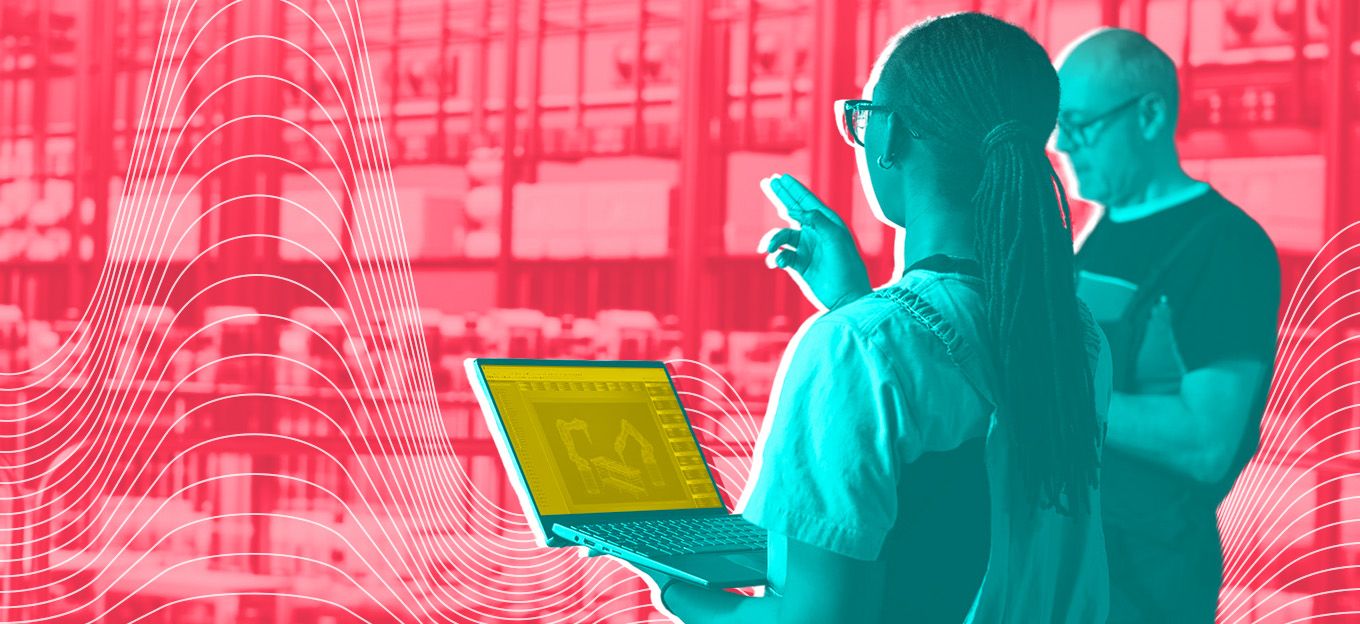IoT Sustainable Transportation: The Role of iSIM
IoT Sustainable Transportation: The Role of iSIM
- Last Updated: December 2, 2024
Kigen
- Last Updated: December 2, 2024



If we don’t reduce greenhouse gas emissions, the Earth will likely reach the disastrous 1.5-degree warming threshold between 2030 and 2052, says the Intergovernmental Panel on Climate Change (IPCC). As the single largest producer of greenhouse gasses, the transportation sector is central to any effort to improve the situation. But how?
'No single technology is sufficient to avoid climate catastrophe, but cellular IoT can help reduce transportation’s carbon footprint in surprisingly powerful ways.' -Kigen UK Limited
No single technology is sufficient to avoid climate catastrophe, but cellular IoT can help reduce transportation’s carbon footprint in surprisingly powerful ways. If you work in transportation—from shipping to mass transit to personal mobility—think of IoT as a valuable part of your sustainability toolkit. But to get the most benefit, these systems must be sustainable across the whole lifecycle, starting with the production of IoT devices.
How can IoT device manufacturers help transportation providers reduce emissions without creating too much waste of their own? One area of focus is a new generation of subscriber identity module (SIM) technology: the integrated SIM, or iSIM. In this article, we’ll explain how IoT supports greener transportation options. Then, we’ll explore iSIMs as the most efficient path toward IoT-driven sustainability in this sector.
IoT’s Contributions to Sustainable Transportation Systems
The transportation industry includes every level of mobility, from passenger vehicles to freight carriers and agricultural equipment to e-scooters. Cellular IoT can help reduce emissions in each. Today’s IoT systems reduce transportation’s environmental footprint by:
1. Reducing Inventory Waste Throughout the Supply Chain.
Medium- and heavy-duty trucks contributed more than a quarter of the broader transportation sector’s greenhouse gas emissions in 2020. When freight gets damaged in transit, shippers have to manufacture and deliver replacement orders, effectively doubling the shipment’s carbon footprint. Cellular asset tracking technology delivers real-time data on the state and condition of shipments throughout their journeys, so shippers can make changes before damage occurs—correcting temperature imbalances in containers, removing shipments from humid warehouses, and more. Such actions prevent waste and associated carbon emissions.
Cellular asset tracking also supports the reuse of materials. For example, shippers and carriers traditionally regarded shipping pallets and crates as disposable. That’s changing. With rising material costs and the need to reduce overall shipping expenses and environmental impacts, the reuse of pallets and crates is becoming imperative. With pallets made of resilient, lightweight materials, and embedded with cellular IoT tracking and content-monitoring devices, the value of these assets increases—further driving widespread reuse.
With asset tracking driven by cellular IoT, haulers can locate and manage pallets efficiently, especially when they move outside the owner’s direct control.
2. Enabling More Energy-Efficient Routes and Fleet Management Decisions.
Without big data, micro-mobility providers struggle to spot use patterns. That leads to a lot of unnecessary fleet transportation. Fleet management platforms use data supplied by cellular IoT features to help you deploy e-scooters and e-bikes where they’ll be used without unnecessary hauling.
In the shipping and delivery sectors, real-time location data can help fleet managers craft more efficient routes for every truck. Connected C02 trackers can even measure emissions before and after adjustments to verify that sustainability efforts are paying off.
3. Supporting Net-Zero EV Charging Networks.
The use of clean energy in EV charging networks will ensure that electric vehicles are truly environmentally friendly. The question is, how do you encourage EV charging networks to draw on clean energy while ensuring they’re never short on power?
That’s where cellular IoT can help. An EV charger can itself be an IoT device. With connectivity and the right sensors, smart chargers can have a view of locally generated clean energy and prioritize its use. Additionally, they can receive and act on charging instructions from the smart grid when clean energy is released from zero-carbon sources. This ensures an EV is primarily charged when clean energy is being generated.
These smart EV chargers contribute to a more accurate view of stored energy. They help manage energy redistribution, trigger the consumption of sustainable power, and help avoid over-reliance on fossil fuels. These systems can even allow charger networks to buy, sell, and trade energy credits, encouraging the transition away from fossil fuels.
In fact, this model has already been developed. Energy Web is a not-for-profit organization that builds open-source, blockchain-based tools and operating systems for managing clean energy grids. In 2022, Energy Web partnered with connectivity and eSIM/iSIM developers to create an IoT system secure enough to support such an energy ecosystem. In short, a technology stack that supports clean energy exchanges in EV networks is here already—and it depends on a SIM feature set designed for rock-solid security.
But that’s not the only way SIM technology—and particularly iSIM technology—supports sustainability in the transportation sector.
5 Ways iSIMs Make Transportation IoT More Sustainable
So, what is an integrated SIM, and how can it support sustainability in IoT systems? Let’s start by comparing the three major SIM technologies in use today:
- Removable SIMs are familiar to most smartphone users; they’re physical cards that users add and remove to load user profiles onto devices. Compared to newer SIM technologies, they take up a lot of device real estate and create higher manufacturing costs. Because anyone can open the SIM tray and access them, they’re also less secure than non-removable SIMs.
- Embedded SIMs (eSIMs) fix many of the security issues explained above. They’re soldered to circuitry within the IoT module, so they take up less space and resist tampering. Remote provisioning allows IoT platforms to update user profiles over the air, so there’s no need to swap out chips.
- Integrated SIMs (iSIMs) are even smaller than eSIM—98 percent smaller. An iSIM is built into the IoT module’s microcontroller unit (MCU). This offers a greatly reduced device footprint and smaller electrical bills of material for manufacturers. An iSIM may also operate as a hardware root of trust. That is, it verifies both the user identity and the firmware of the device, defusing a common IoT hacking strategy. Like eSIMs, iSIMs can be provisioned remotely.
The design differences inherent to iSIMs lead to more sustainable operations for device manufacturers and users alike. Here are five examples of iSIMs' sustainability benefits for transportation IoT devices:
- Many iSIM IoT modules are designed to connect through low-power networks (LPWAN, etc). While iSIMs can connect through high-volume cellular networks, they can also be optimized for LPWAN connectivity. These networks draw much less power than high-volume cellular networks, so the overall environmental impact of using the device will be lower over time. These devices are built to be energy-efficient.
- By shrinking the electrical bill of materials, iSIMs require minimal resources for manufacturers. Fewer components mean less upstream production—and a smaller carbon footprint.
- The remote provisioning capabilities of iSIMs extend product lifetimes considerably. Remote SIM provisioning allows you to change user profiles and networks to extend usability in the field. That enables transportation providers to adapt to changing network environments instead of replacing devices every few years.
- Lower production costs bring the sustainability advantages of IoT to a broader audience. Asset tracking in the shipping industry used to be relegated to high-value products like heavy equipment. It was just too expensive to justify tracking less costly shipments. By reducing total costs of ownership for IoT systems, iSIMs scale the sustainability benefits discussed above, so everyone can realize them.
- Enhanced iSIM security further broadens the scalability of IoT in the transportation industry. Decision-makers in the transportation industry won’t adopt IoT solutions—or use them to reduce emissions—without being sure the data they share is extremely secure. iSIMs provide this security by operating as a hardware root of trust. With the right iSIM partner, your network’s data is safe on the device and authenticated by the network and applications that use it. That trust will lead to more adoption, scaling the sustainable features of IoT across the transportation industry.
Cutting greenhouse gas emissions is not a simple challenge, and it will take more than IoT alone to create a more sustainable transportation industry. But every step we take toward a greener future is worth investigating—and iSIM-powered IoT solutions have a lot to offer the transportation sector right now.
The Most Comprehensive IoT Newsletter for Enterprises
Showcasing the highest-quality content, resources, news, and insights from the world of the Internet of Things. Subscribe to remain informed and up-to-date.
New Podcast Episode

The State of Cybersecurity in IoT
Related Articles




